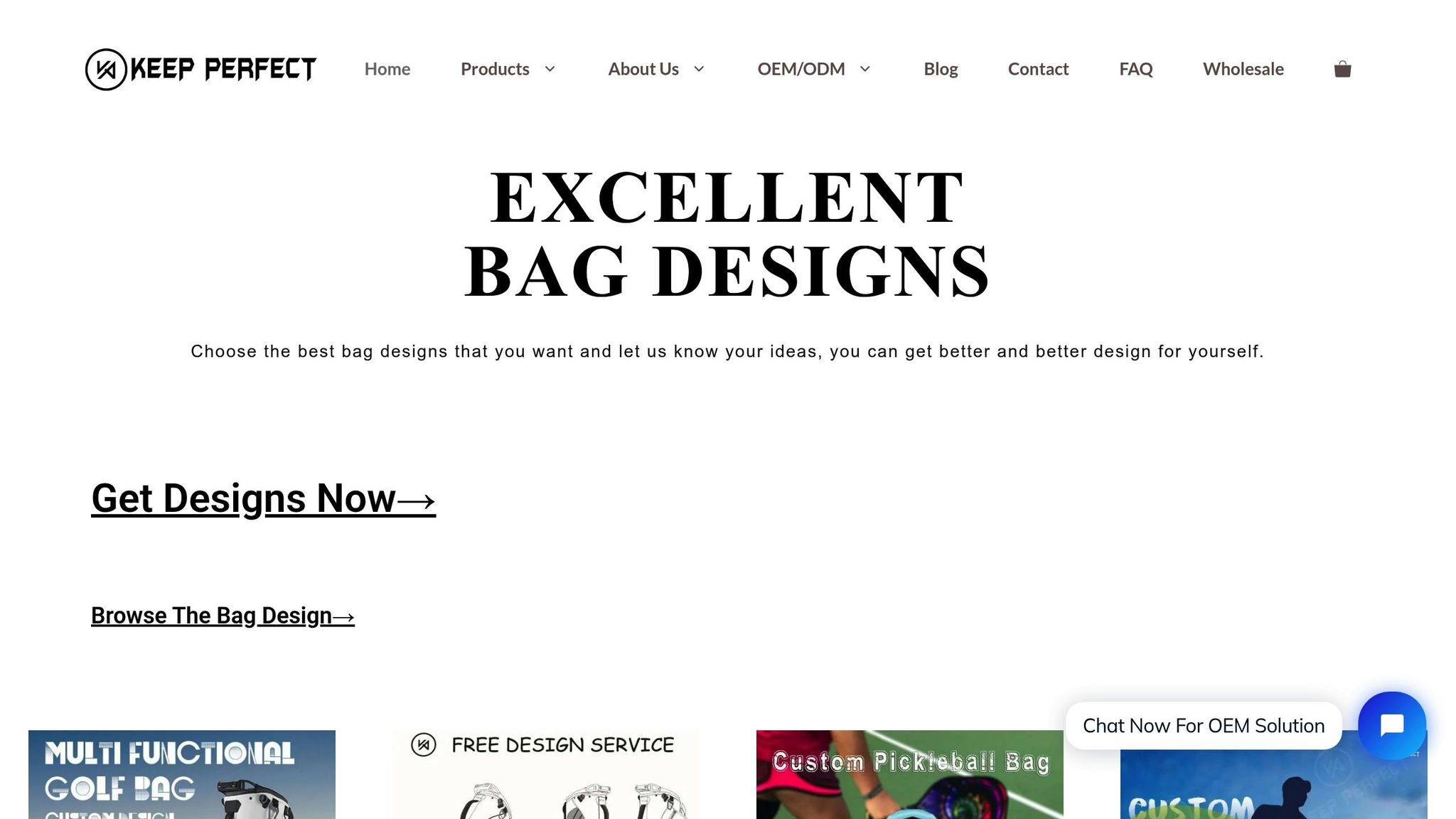Prototyping and sampling are two essential steps in custom bag manufacturing. Here’s a quick breakdown:
- Prototyping tests initial design concepts, focusing on functionality and structure using alternative materials. It happens early in the process to refine designs and fix issues.
- Sampling creates a finished version of the product using final materials, ensuring it meets all specifications before mass production.
Quick Comparison
| Aspect | Prototypes | Samples |
|---|---|---|
| Purpose | Test design concepts | Ensure production readiness |
| Materials | Alternative materials | Final production materials |
| Construction | Basic functionality | Production-level quality |
| Details | Core features only | Matches final product specs |
| Modifications | Major changes allowed | Minor tweaks only |
| Quality Level | Functional, not polished | Matches production standards |
Use prototypes to refine ideas and samples to finalize the product. Together, they ensure high-quality results.
Samples and Prototypes – What You Need to Know
Understanding Prototyping
Prototyping is a crucial early step in creating sports bags. It helps test the design, uncover potential issues, and make improvements before moving forward.
What is a Prototype?
A prototype is an initial model that checks the core elements of a bag’s design and performance. It ensures the design concept works and that the chosen materials are suitable for the bag’s intended use.
Key Focus Areas in Prototyping
Prototypes are used to examine several important factors:
- Assess the overall design and structure
- Test the durability and quality of materials and components
- Confirm the functionality of features like compartments, straps, closures, and storage
The main goal is to ensure the bag’s design is practical and functional before moving into full-scale production.
When Does Prototyping Happen?
Prototyping begins right after the design concept is approved. This allows for quick testing and adjustments based on feedback. It ensures the bag’s basic functionality is solid before moving on to more advanced stages, paving the way for further comparisons with production samples.
Understanding Sampling
After the prototyping phase, sampling ensures the final design is ready for mass production. This step builds on the prototype by confirming that every detail matches customer requirements. In custom bag manufacturing, sampling involves creating physical examples of the final product to check quality and ensure all specifications are met.
What is a Sample?
A sample is a fully finished version of the bag, serving as a quality benchmark. It showcases the complete design and confirms that the final product meets the agreed-upon specifications before production begins.
Key Features of a Sample
Samples stand out from prototypes in several ways:
- Complete Design Details: Every element, from stitching to logo placement, is exactly as it will appear in the final product.
- Actual Materials: Samples use the same materials planned for production, not substitutes.
- Production-Level Quality: Created using the same processes as the final production run.
- Full Functionality: All compartments, features, and accessories are fully operational.
- Precise Specifications: Measurements, weights, and dimensions match the design exactly.
When Are Samples Made?
Samples are created after the prototyping phase confirms the basic functionality of the design. This step allows for final refinements, ensures quality, and gives customers a chance to review the finished product before mass production begins.
"From Sketch to Sample: How We Bring Your Custom Bag Design to Life (Video Guide)" highlights JUNYUAN BAGS’ process of turning custom designs into high-quality samples that meet customer expectations.
Sampling is especially critical for sports bags, where specific designs for activities like golf, tennis, or basketball require strict adherence to standards. Each sample undergoes thorough quality checks to ensure it meets both functional and aesthetic requirements.
sbb-itb-1e6451b
Prototypes vs Samples: Main Differences
Knowing the difference between prototypes and samples is key to making the custom bag manufacturing process smoother and more efficient.
Feature Comparison
Here’s a breakdown of how prototypes and samples differ:
| Aspect | Prototypes | Samples |
|---|---|---|
| Purpose | Test design concepts | Ensure production readiness |
| Materials | Use alternative materials | Use final production materials |
| Construction | Focus on basic functionality | Reflect final production quality |
| Details | Highlight core features | Match finished product specs |
| Modifications | Allow significant changes | Allow only minor tweaks |
| Quality Level | Functional but not polished | Matches production standards |
These differences determine how each is used in the design and production phases.
Different Goals
Prototypes are all about testing design ideas. They help manufacturers spot and fix issues early, when changes are easier and less expensive to make.
Samples, on the other hand, confirm the final design is ready for production. They represent the actual product customers will receive, ensuring every detail is right before mass production begins.
Price and Production
Costs and production methods also set prototypes and samples apart:
- Prototypes are made in small quantities using alternative materials and simpler methods, which makes them faster and cheaper to produce.
- Samples are created in limited runs with production-grade materials and methods. This results in higher costs and longer production times, but they closely match the finished product.
Choosing Between Prototypes and Samples
Deciding whether to use prototypes or samples is a key step in bag development. Each serves a different purpose and plays a specific role in the process. Let’s break it down.
When to Use Prototypes
Prototypes come into play early in the design process. They’re particularly useful for:
- Testing new design concepts or features
- Checking how compartments and closures function
- Trying out different size options before finalizing dimensions
- Evaluating ergonomic details like strap placement and handle comfort
- Ensuring the overall structure and construction methods are on track
For instance, JUNYUAN BAGS uses prototypes when designing a new golf bag. They test club compartment layouts and the stand mechanism’s stability before moving on to the final materials.
When to Use Samples
Samples are better suited for the later stages of development. They help with:
- Finalizing material choices and color combinations
- Ensuring production meets quality and specification standards
- Testing durability with actual materials
- Presenting the finished product to stakeholders
- Creating documentation for production standards
This step is essential for confirming that the final product aligns with expectations.
Combining Prototypes and Samples
Using both prototypes and samples in a structured way can streamline the entire process. Here’s how it works:
| Development Stage | Tool | Purpose |
|---|---|---|
| Initial Design | Initial Prototype | Test basic functionality and dimensions |
| Design Refinement | Refined Prototype | Validate features and ergonomics |
| Pre-Production | First Sample | Confirm materials and production methods |
| Final Approval | Production Sample | Ensure quality and final specifications |
Start with basic prototypes to test initial ideas, refine them with detailed prototypes, and finish with production samples to guarantee quality. Following this step-by-step approach ensures the design and production process runs smoothly from start to finish.
Conclusion
Key Points Review
Prototypes are used to test design ideas and functionality, while samples confirm the final specifications and ensure quality. Together, these stages help guarantee both creativity and reliability in the finished product.
Benefits for Bag Making
In custom bag development, prototypes and samples play a crucial role. Prototypes let manufacturers test and adjust key features before choosing final materials. Samples, on the other hand, confirm the production process, ensuring quality in areas like stitching, materials, and finishing.
For example, prototypes help refine design details, while samples ensure the materials and construction meet durability standards. By using both, you can move into production with confidence.
Next Steps with JUNYUAN BAGS

Looking to bring your custom bag design to life? JUNYUAN BAGS offers a design process that combines prototyping and sampling to ensure flawless results. Their team works with you to refine your concept, create accurate prototypes, and produce high-quality samples. Whether it’s sports bags, travel bags, or specialized designs, they ensure every detail – logos, dimensions, materials, and patterns – meets your exact requirements.
Reach out to JUNYUAN BAGS to start your custom bag project. Their expertise in design and production ensures a smooth process from concept to final product. Let them help you create the perfect bag for your needs.
Related Blog Posts
- From Concept to Delivery: A Step-by-Step Walkthrough of Our Custom Bag Production Process
- How to Ensure Quality Control When Sourcing Custom Bags from Overseas Suppliers
- 5 Red Flags to Avoid When Choosing a Custom Bag Manufacturer
- From Sketch to Sample: How We Bring Your Custom Bag Design to Life (Video Guide




 Mobile/What's App/Wechat
Mobile/What's App/Wechat E-Mail
E-Mail ADD
ADD




